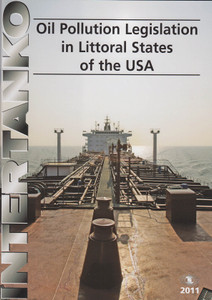
This publication is a review of the problems posed by marine oil spills and the potential response measures to them. It contains multiple case studies, including a section on the ‘Deepwater Horizon’ incident, which are supported by photographs and diagrams.
It will benefit anyone involved in training programmes, contingency planning or response to oil spills.
The primary objective of a rapid response to oil spills is to return to normal activity as quickly as possible and to minimise contamination to the environment. This publication, which draws on experienced gained, and lessons learned, from previous oil spill incidents, is designed as a guide to help any ship (or port facility) involved in an oil spill incident to understand and respond to the event as effectively and safely as possible.
It covers:
- The causes of oil spills
- environmental and economic effects
- containment and recovery
- clean-up and disposal
- contingency planning.
This publication also includes an extensive bibliography of further reading.
Chapter 1:?Sources of Oil in the Marine Environment
Chapter 2:?Fate of Marine Oil Spills
Chapter 3:?Aerial Surveillance at Sea
Chapter 4:?Oil on Shorelines
Chapter 5:?Environmental Effects of Oil Spills
Chapter 6:?Economic Effects of Oil Spills
Chapter 7:?Containment and Recovery
Chapter 8:?The Use of Dispersants
Chapter 9:?Shoreline Clean-up
Chapter 10:?Disposal of Oil and Oiled Waste
Chapter 11:?Contingency Planning
Chapter 12: Alternative Techniques
Further Reading
Other ITOPF Publications
ITOPF
ITOPF has responded to over 800 incidents involving oil or chemical spills worldwide. Our highly skilled international team are ready to assist 24 hours a day, 365 days a year to provide impartial technical advice.
As a not-for-profit organisation, we have devoted efforts to developing a wide range of technical services to promote effective response in the marine environment to back up our core role of responding to ship-sourced spills. The five key services that we offer are spill response, claims analysis & damage assessment, contingency planning, training and information.
Our services are provided to our Members (tanker owners) or Associates (other shipowners) and their oil pollution insurers (normally one of the P&I Clubs), and we offer also our services at the request of governments and intergovernmental organisations such as the International Oil Pollution Compensation Funds (IOPC Funds).
Our London based team of 34, 15 of whom are available to respond to spills, combined with half a century of first-hand spill response experience, is what makes us truly unique.
- Number of Pages:
- 176
- ISBN:
- 9781856093545
- Published Date:
- August 2012
- Binding Format:
- Hardback
- Book Height:
- 285 mm
- Book Width:
- 170 mm
- Weight:
- 0.9 kg
- Author:
ITOPF
- Preview:
- Yes
 Witherbys.com
Witherbys.com



